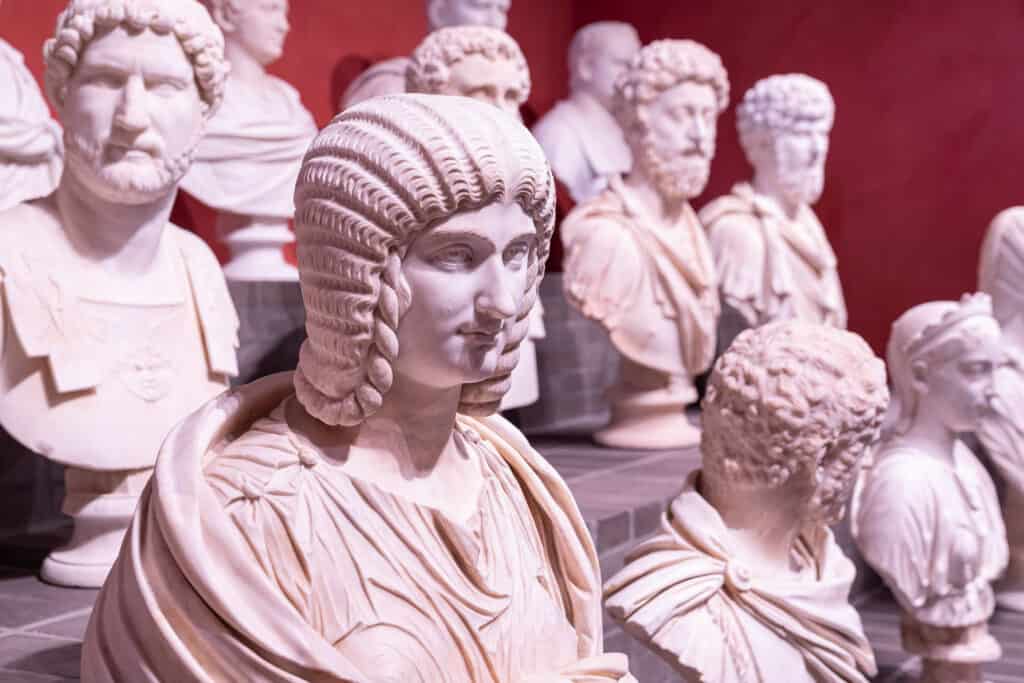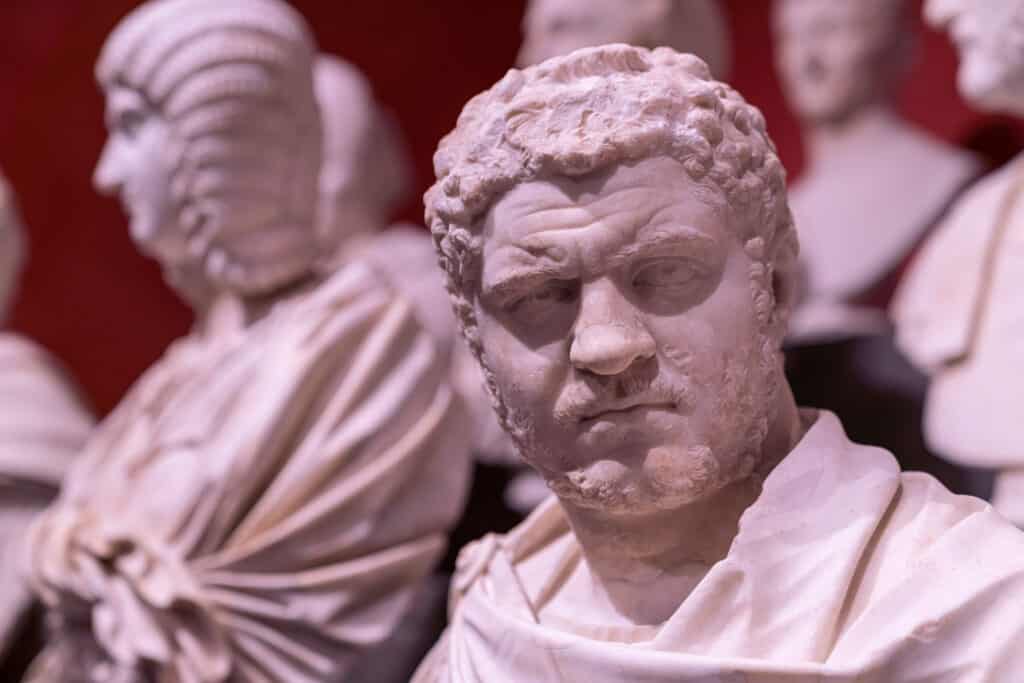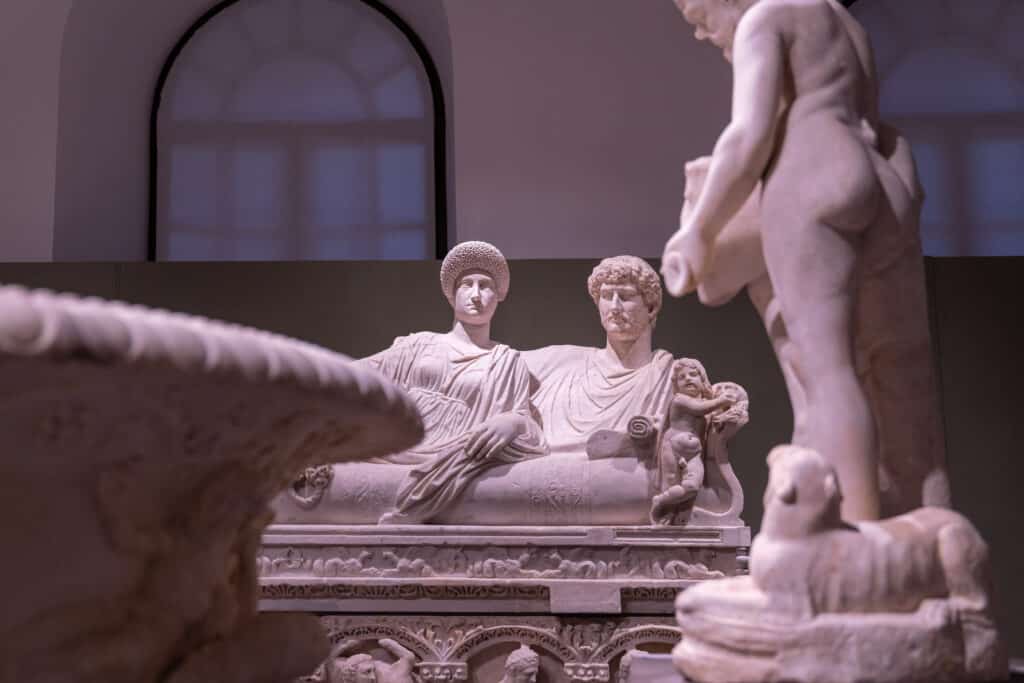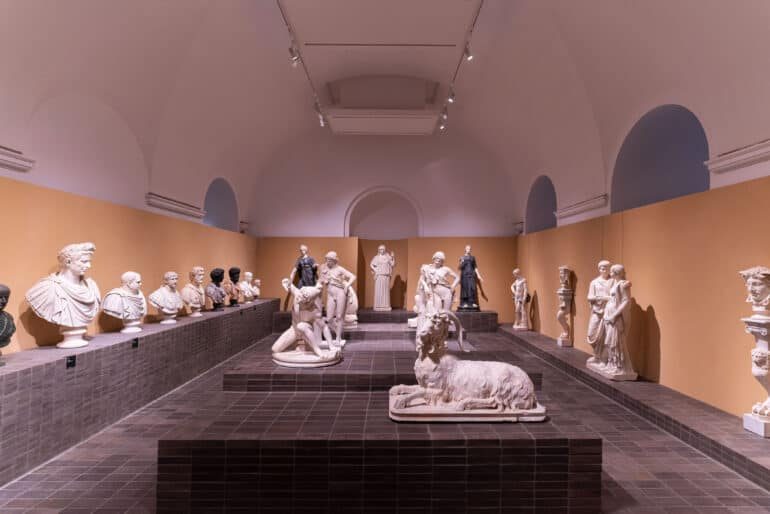The Masterpieces of the Torlonia Collections Exhibited at Villa Caffarelli.
The Torlonia Collection, housed at the Capitoline Museum in the Villa Caffarelli is truly a spectacular sight. Considered as one of the world’s most important private collections of art, the collection features over ninety sensational sculptures dating back to the fourteenth century. Presented in the form of a story spread out across fourteen sprawling rooms, the exhibition explores the history of the collection of both Roman and Greek marbles, beginning with the opening of the Torlonia Museum in 1875.

As you make your way into the first room within the exhibition, which features numerous torso sculptures from the evocation of Museo Torlonia, you are met with an expansive assortment of incredibly detailed white marble statues. From the fine detailing of the lines carved within the heads to give the effect of life-like curls, to the frown lines displayed on many of the men’s faces, each sculpture is more impressive than the next. As you move into the second room you discover sculptures that were retrieved from the same Torlonia excavations conducted during the 19th century.
Rooms three through five feature the magnificent 18th-century collections at Villa Albani as well as The Cavaceppi Studio. A gargantuan, circular fountain basin is displayed in the center of the room with a presence that commands the entire room. Some of the actions displayed on the basin include a nude man fighting off a lion, a man shooting a bow and arrow at a large wild bird, and a large oak tree. Another fountain is placed adjacent to the large fountain-like basin, with a beautifully detailed sculpture of a man with Greek features such as a toned abdomen and a rather blank gaze. The basin is rather impressive, made of two different kinds of beautiful dark marble. As you continue through the room you discover a statue of a woman balancing a basket on her head; the detailing to mimic the straw texture of a basket is jaw-dropping.

The Giustiniani collection from the 17th century is spread out across four different rooms, featuring twelve portrait busts, all impressively intact. The continuation of the Roman and Greek theme within the sculptures is apparent through the busts of the men, with each man being clothed in rather royal attire, as well as having rather stoic expressions.
The beauty of women is on full display in section five which houses sculptures of collections from the 15th and 16th centuries. One sculpture features what appears to be a wealthy woman, clothed in a long, wrapped gown. Appreciation is shown for the imperfections within a woman’s body through the next sculpture, which depicts a nude woman knelt over, her bare stomach on display.

The Antiquity collection displays a massive box-like arrangement, with sculptures carved into depicting a royal couple lounging upon a regal mattress, with the carvings of battles between both men and animals below. The detailing of a lion attached to the corner of another large box is absolutely stunning. The intensity and anger within the animal’s eyes shown through the distraught expression created by the detailed lines carved around the face.
The impressive detailing continues through the rather static expression of the man’s face in which he is staring off into the distance, almost longing for something that is not attainable. The exhibition concludes in a grand fashion featuring pieces from the time era of Exedra Marcus Aurelius, with the entire collection given as a gift to the people of Rome in 1471 by Pope Sixtus.
UNTIL FEBRUARY 27, 2022
Villa Caffarelli, Musei Capitolini, New venue at Palazzo Caffarelli
Opening hours
Everyday 9.30am-7.30pm
Last admission one hour before closing time
Entrance tickets
Exhibition only
– Adults € 13,00 + 1,00 presale;
– Concessions € 11,00 + 1,00 presale;
– Special School groups € 4,00 per student;
– Special Family € 22,00
Audioguide exhibition in Italian and English € 5,00
INFO
Call center 060608 (daily from 9.00 to 19.00)



